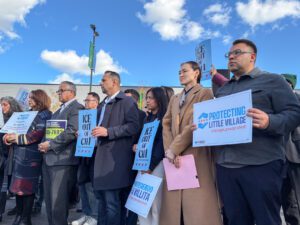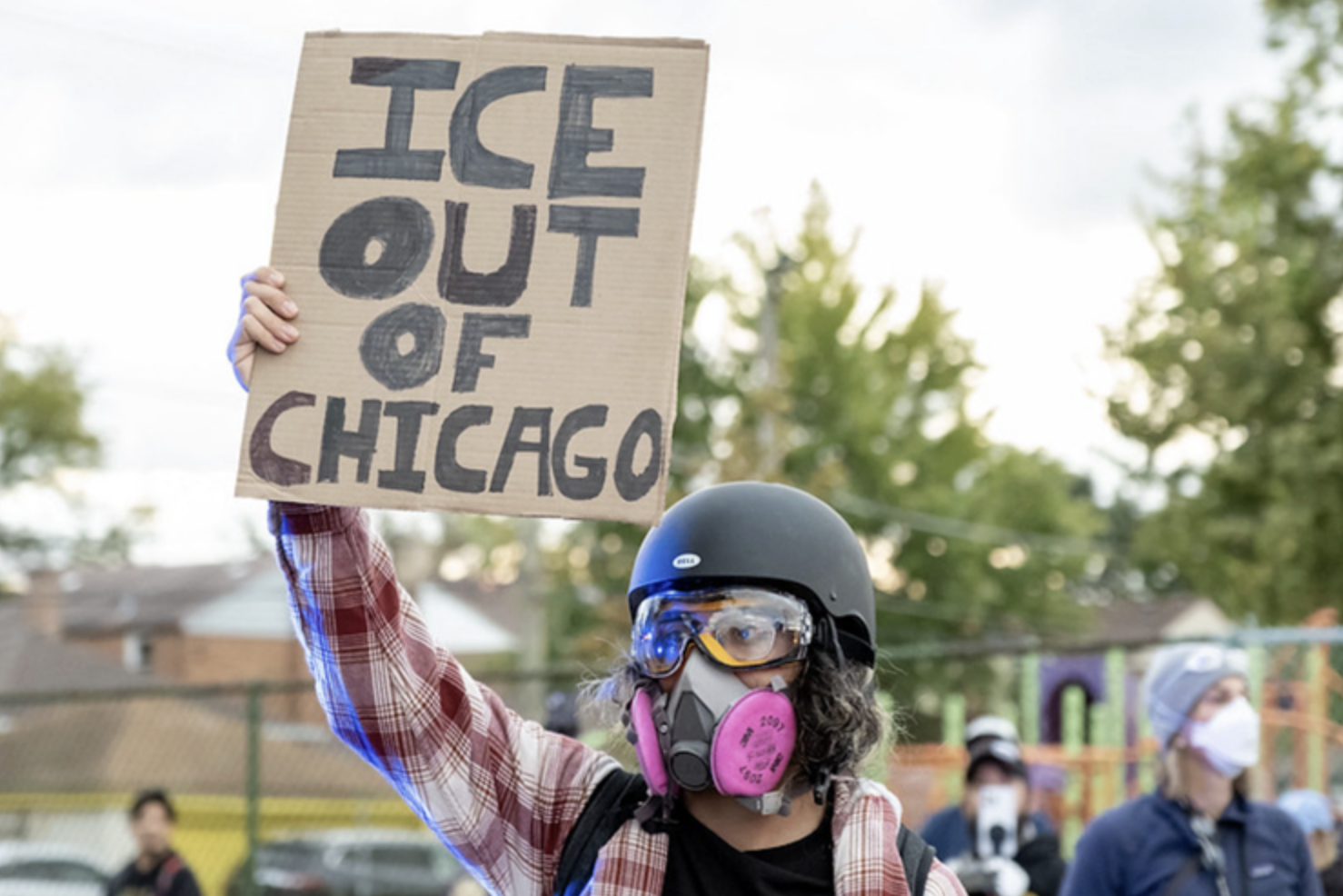 Sarah-Ji, Fotos de Amor y Lucha
Sarah-Ji, Fotos de Amor y LuchaLos residentes y los líderes electos de Chicago se han negado a permanecer de brazos cruzados ante los ataques dirigidos contra miembros de la comunidad.
Este artículo es una publiación conjunta de CALÓ News, con sede en Los Ángeles, y Borderless Magazine.
Era un soleado día de otoño, el 25 de octubre, en Chicago. Las hojas habían empezado a caer de los árboles, cambiando a varios tonos de naranja y marcando el comienzo de la estación. Niños y padres se reunían para el desfile anual de Halloween organizado por la comunidad en el vecindario de Old Irving Park, en el noroeste de la ciudad.
Pocos minutos antes de que comenzaran las festividades, una pequeña multitud se congregó frente a una casa mientras agentes federales intentaban detener a obreros de la construcción que trabajaban en una casa cercana a la ruta del desfile.
La tensión aumentó rápidamente. Vecinos salieron de sus casas gritando en señal de protesta e, instantes después, cartuchos de gas lacrimógeno golpearon el pavimento. Se desató el caos y las familias y los niños buscaron refugio— tan solo diez minutos antes de que diera comienzo el muy querido desfile del vecindario.
Noticias que ponen el poder en el punto de mira y a las comunidades en el centro.
Suscríbase a nuestro boletín gratuito y reciba actualizaciones dos veces por semana.
En los últimos meses, Chicago se ha encontrado en el extremo receptor de una mayor aplicación de las leyes federales de inmigración. Desde la redada militarizada en el complejo de apartamentos South Shore en el sur de Chicago, hasta las redadas de inmigración en vecindarios predominantemente mexicanos como Little Village y Pilsen.
Los residentes y los líderes electos de Chicago se han negado a permanecer de brazos cruzados ante los ataques dirigidos contra miembros de la comunidad.
Desde el principio, tanto el gobernador de Illinois, J.B. Pritzker, como el alcalde de Chicago, Brandon Johnson, se han mantenido firmes ante las amenazas directas de Trump contra los habitantes de Chicago y sus líderes electos.
Tras la escalada federal en Old Irving Park, la jueza federal Sara Ellis ordenó al jefe de la Patrulla Fronteriza Gregory Bovino comparecer ante el tribunal, cuestionando su decisión de disparar gases lacrimógenos en zonas residenciales. Frustrada porque las autoridades federales ignoraran su anterior directiva de limitar el uso de armas antidisturbios contra manifestantes pacíficos, periodistas y transeúntes, Ellis exigió informes diarios a Bovino. "Los niños disfrazados de Halloween que acuden a un desfile no suponen una amenaza inmediata para la seguridad de un agente del orden," dijo. "Simplemente no lo representan."
Durante el último mes, los agentes federales han intensificado las redadas en varios vecindarios de Chicago, concentrándose inicialmente en el sur y suroeste de la ciudad antes de ampliar sus operaciones a zonas del lado norte, como Wrigleyville, Albany Park y Edgewater.
El liderazgo electo de Chicago ha respondido a la escalada de violencia de la administración Trump con una política progresista y una oposición comunitaria organizada. El alcalde Johnson es un firme defensor de las comunidades inmigrantes que representa.
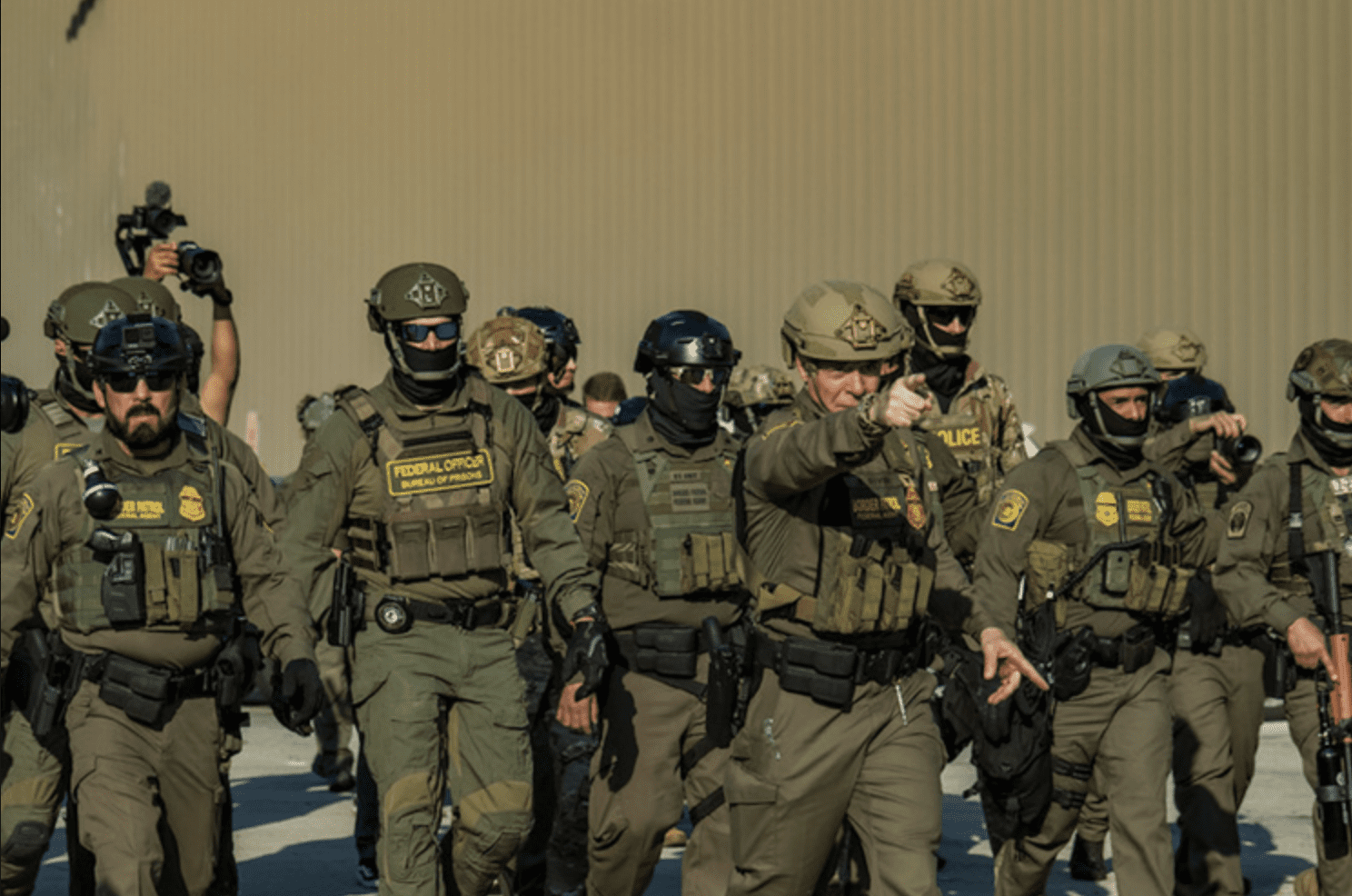
Durante una conferencia de prensa, Johnson respondió con firmeza al uso del término "extranjeros ilegales" por parte de un reportero, sugiriendo que dicho lenguaje deshumanizaba a inmigrantes. "No tenemos extranjeros ilegales," dijo, antes de mantenerse firme. "Asegurémonos de usar el lenguaje correcto, estamos hablando de personas indocumentadas, que son seres humanos – lo último que voy a hacer es acepta ese lenguaje racista y desagradable para describir a seres humanos."
Johnson sigue siendo uno de los pocos alcaldes de una gran ciudad estadounidense que se posiciona inequívocamente a favor de las comunidades inmigrantes de clase trabajadora. En el sur de California, donde gran parte de la población es inmigrante o proviene de familias inmigrantes, los organizadores locales han criticado la inacción de sus ayuntamientos, lo que contrasta marcadamente con el liderazgo más asertivo en Chicago.
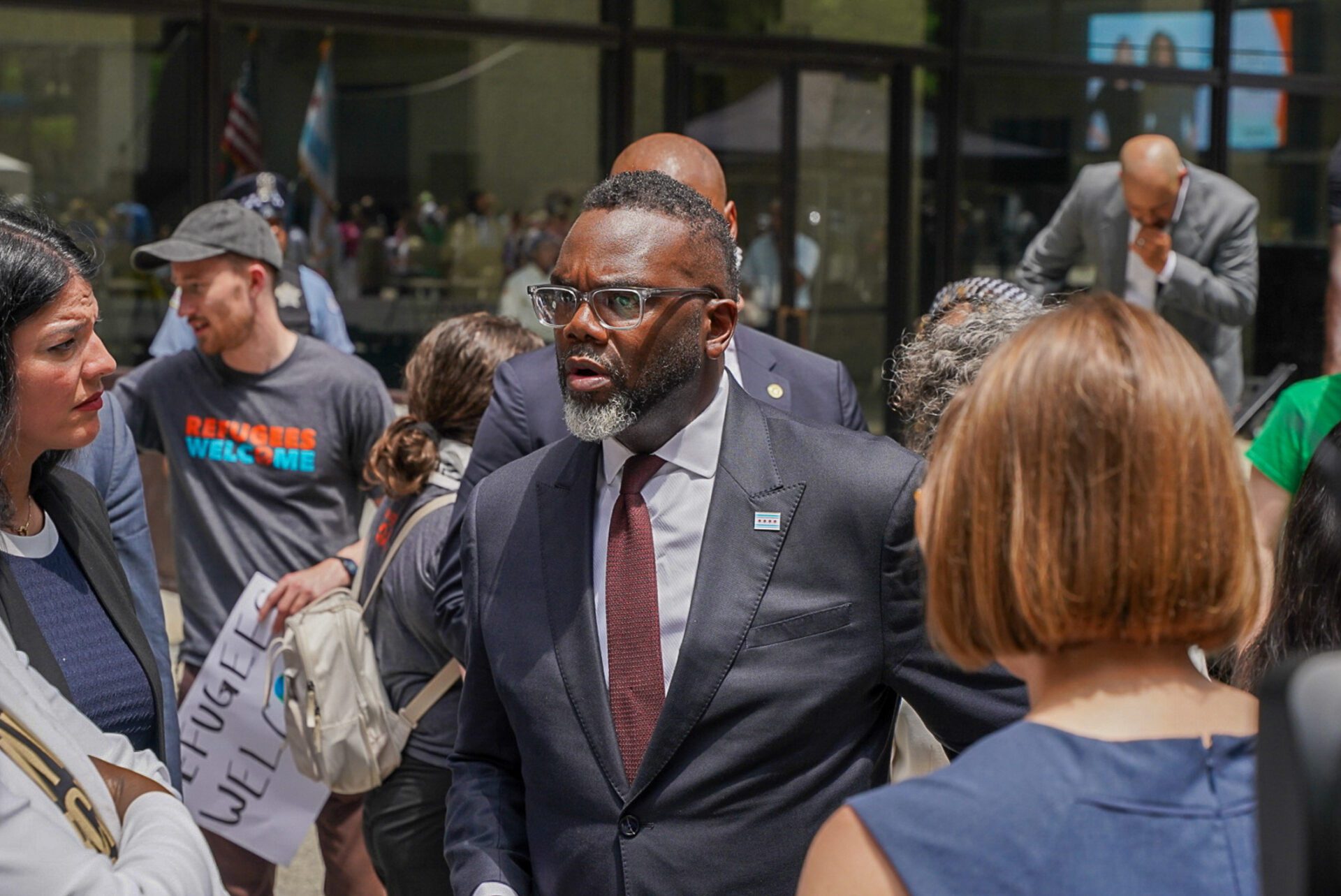
En el sur de California, colectivos locales se han movilizado para monitorear e interrumpir las operaciones federales de inmigración. Muchos residentes han instado a los funcionarios electos a tomar la iniciativa en la protección de sus electores.
En las semanas posteriores a las elecciones de 2024, los residentes de California expresaron su preocupación por la necesidad de mayores protecciones antes de la toma de posesión de Trump. En respuesta, el Ayuntamiento de Los Ángeles aprobó por unanimidad la ordenanza definitiva de ciudad santuario el 19 de noviembre de 2024, adoptándola formalmente el 3 de diciembre. La alcaldesa Bass promulgó la ley el 9 de diciembre.
A pesar de esos esfuerzos, las redadas federales de inmigración se han intensificado desde entonces en todo el sur de California, llegando a comunidades desde Long Beach hasta el condado de Orange. En Los Ángeles, la alcaldesa Bass ha estado prácticamente ausente de la escena pública desde que se produjo una "redada federal de inmigración" a plena luz del día en MacArthur Park en julio, que posteriormente se supo que fue una sesión fotográfica. Su liderazgo a lo largo de las redadas de verano ha sido cuestionado en repetidas ocasiones.
A pesar de las medidas para limitar la intervención federal, la alcaldesa Bass ha subrayado que la ciudad no puede detener unilateralmente la aplicación de la ley federal – haciéndose eco de sentimientos similares de otros funcionarios electos del Condado de Los Ángeles.
El alcalde de Long Beach, Rex Richardson, y el Ayuntamiento de Long Beach se han enfrentado a las críticas de los residentes por no hacer lo suficiente para proteger a la comunidad del aumento de la actividad federal.
"No controlamos al gobierno federal, no controlamos al ICE, no controlamos a la Guardia Nacional, no controlamos a este presidente — y, lamentablemente, ellos no nos avisan cuando vienen a la ciudad," dijo Richardson durante una reunión del consejo municipal de junio, después de que se intensificaran las operaciones del ICE en la región.
Richardson añadió que si bien el Ayuntamiento no apoya la presencia de agentes federales en Long Beach, "la realidad es que hay una operación en los próximos 30 o 60 días -quién sabe cuántos- y habrá actividades en nuestra región." Instó a los residentes a buscar apoyo en las organizaciones de defensa de los derechos de los inmigrantes.
En julio de 2025, un tribunal federal emitió una orden de restricción temporal (TRO, por sus siglas en inglés) que limitaba las tácticas de control migratorio federal. Sin embargo, la Corte Suprema de Estados Unidos revocó esta orden en septiembre de 2025, permitiendo a los agentes federales llevar a cabo redadas como antes.
Más recientemente, la alcaldesa Bass se unió al congresista estadounidense Robert García para pedir una investigación del Congreso sobre la presunta detención ilegal y el abuso de ciudadanos estadounidenses e inmigrantes por parte de agentes federales.
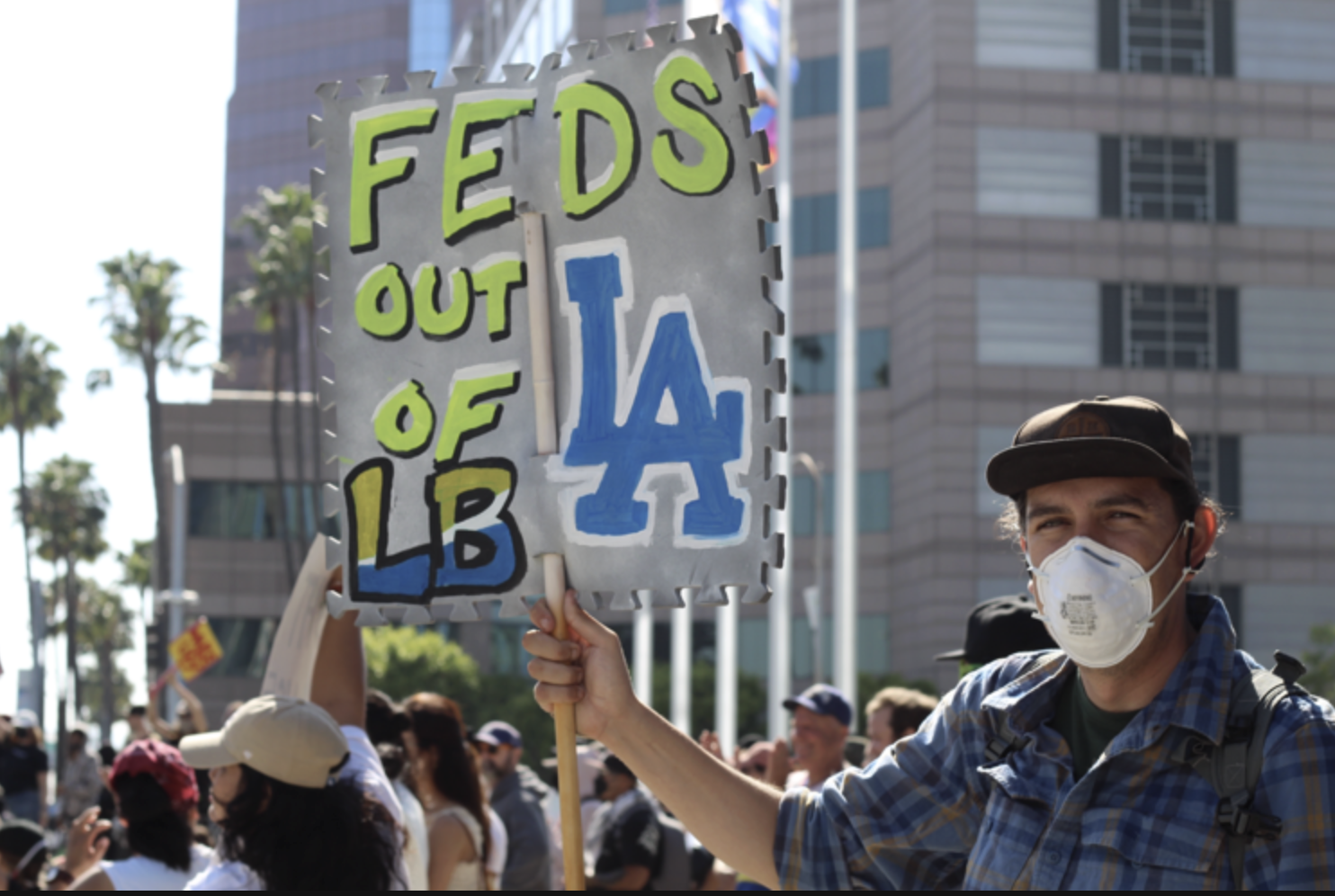
Chicago demuestra el poder y la solidaridad de la clase trabajadora
Aunque puede ser fácil señalar las deficiencias de los dirigentes electos de Los Ángeles, la respuesta política de Chicago no es una coincidencia — sino que está diseñada. El alcalde Johnson ha trabajado estrechamente con una coalición de concejales que han dado respuestas firmes y coordinadas en nombre de sus comunidades. Juntos, no sólo han cambiado el panorama político de Chicago hacia políticas más progresistas, sino que también han transformado la cultura política de la ciudad para priorizar el liderazgo colaborativo.
En octubre, la concejal Jessie Fuentes, del distrito 26, que incluye Humboldt Park y Logan Square, fue filmado mientras era agarrado y esposado por agentes federales tras solicitar ver una orden judicial en Humboldt Health Chicago. El incidente se produjo después de que "agentes" vestidos de civil se presentaran en el hospital y detuvieran a un paciente, que se encontraba dentro del distrito del concejal Fuentes.
Si bien a algunos les puede sorprender la participación activa de los líderes electos en la defensa de los electores, es totalmente intencional que Chicago cuente con una representación electa tan progresista.
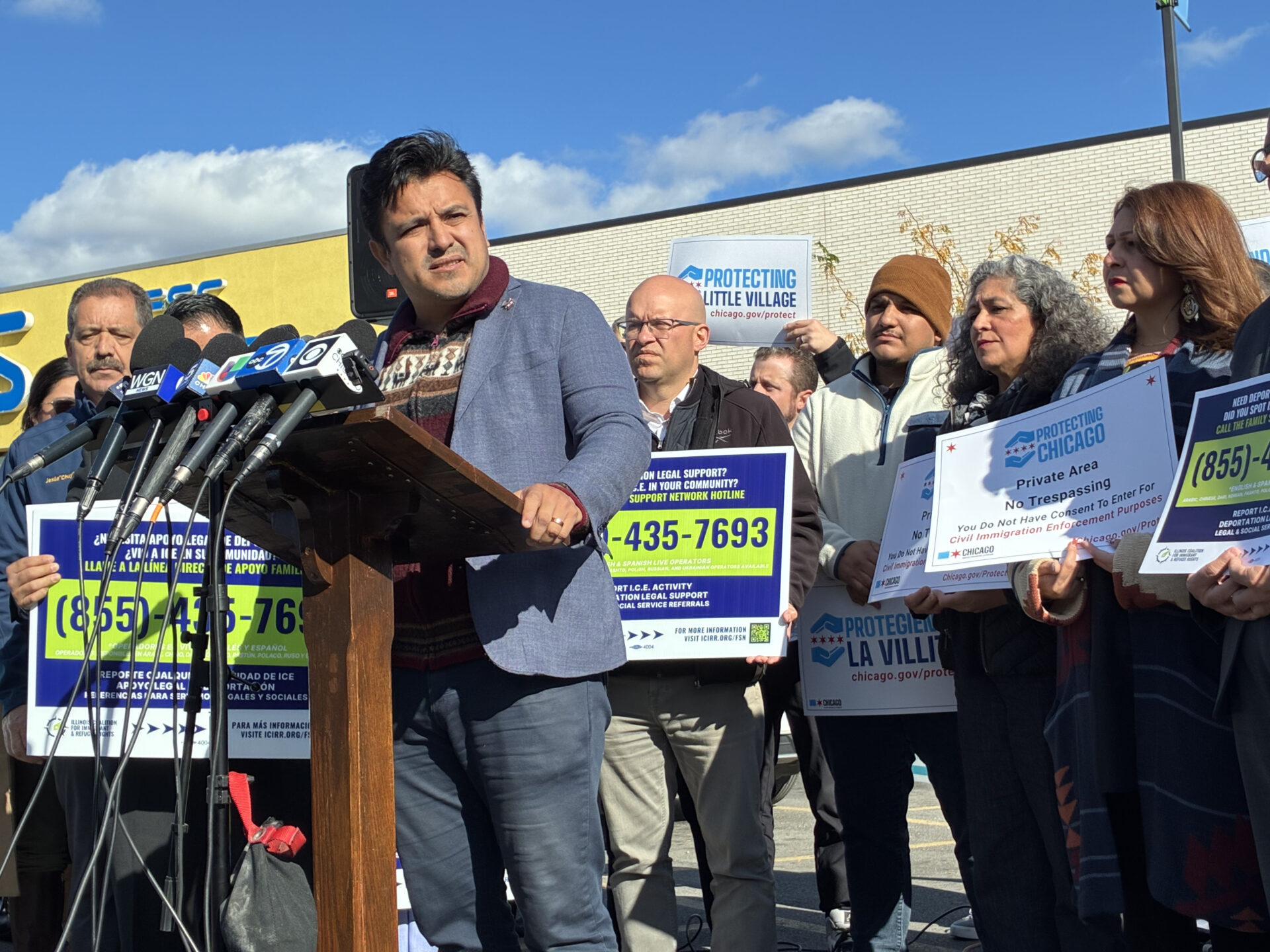
El concejal Byron Sigcho-López habló con CALÓ News sobre la labor de los líderes electos de Chicago y la importancia de estar presentes para proteger a los electores. "Estos son nuestros vecinos," declaró, "cuando detienen a uno de nuestros vendedores de tamales, son familias destrozadas, son vecinos afectados. Así que nos lo tomamos muy a pecho."
Este inmigrante ecuatoriano y padre de tres hijos forma parte del Progressive Reform Caucus del Ayuntamiento de Chicago, creado en 2013 como una coalición de concejales comprometidos a construir una ciudad más justa y equitativa. En 2019, tras las elecciones municipales de ese año, seis miembros de la sección de Chicago de los Democratic Socialists of America formaron el Socialist Caucus, entre ellos Sigcho-López. Los seis se unieron más tarde al Progressive Reform Caucus más amplio, reforzando un movimiento creciente dentro del Ayuntamiento para impulsar una reforma sistémica a través de una gobernanza colaborativa y basada en valores.
"Antes de ser concejal, fui organizador y maestro," dijo Sigcho-López. El concejal del distrito 25 dice que considera su papel como el de organizador de la clase trabajadora, preguntándose, "¿cómo podemos ser mejores servidores públicos para proteger a nuestra comunidad, a nuestros vecinos, y a todos los electores?"
Al preguntársele qué hizo tan efectiva la resistencia de Chicago contra el DHS y otros oficiales federales, hizo hincapié en la importancia de adoptar distintos enfoques. Mientras algunos se han centrado en soluciones de respuesta más rápida, como las patrullas con silbatos, otros se han inclinado por protecciones legislativas, como el establecimiento de "zonas libres del ice."
La orden ejecutiva firmada por el alcalde Johnson a principios de octubre, como parte de la iniciativa "Protegiendo Chicago," tiene por objeto proteger los derechos constitucionales de los residentes y garantizar que las personas se sientan seguras al acceder a los servicios municipales. Prohíbe a los agentes federales de inmigración utilizar propiedades municipales y algunas propiedades privadas como bases de operaciones para redadas u otras operaciones.
Sigcho-López también enfatizó que, a pesar de la larga historia de segregación vecinal en Chicago, la ciudad ha mostrado un frente unificado cuando se trata de proteger a sus jóvenes, citando el "peligro infantil" como una de las principales crisis que están navegando bajo la invasión federal de Trump. "Hemos tenido gente alrededor de las escuelas, iglesias, hospitales, pero todos están trabajando en conjunto y han creado una amplia red de respuesta rápida."
Esa coordinación entre vecinos, añadió, ha facilitado la documentación de incidentes y la exigencia de responsabilidades a las autoridades, desde el punto de vista legal. Las redes comunitarias han desempeñado un papel clave en el registro de casos de agresión por parte de agentes federales, a menudo desplegados con escasa supervisión. "Estamos trabajando juntos," dijo, "para asegurarnos de que las tácticas de divide y vencerás no nos dividan."
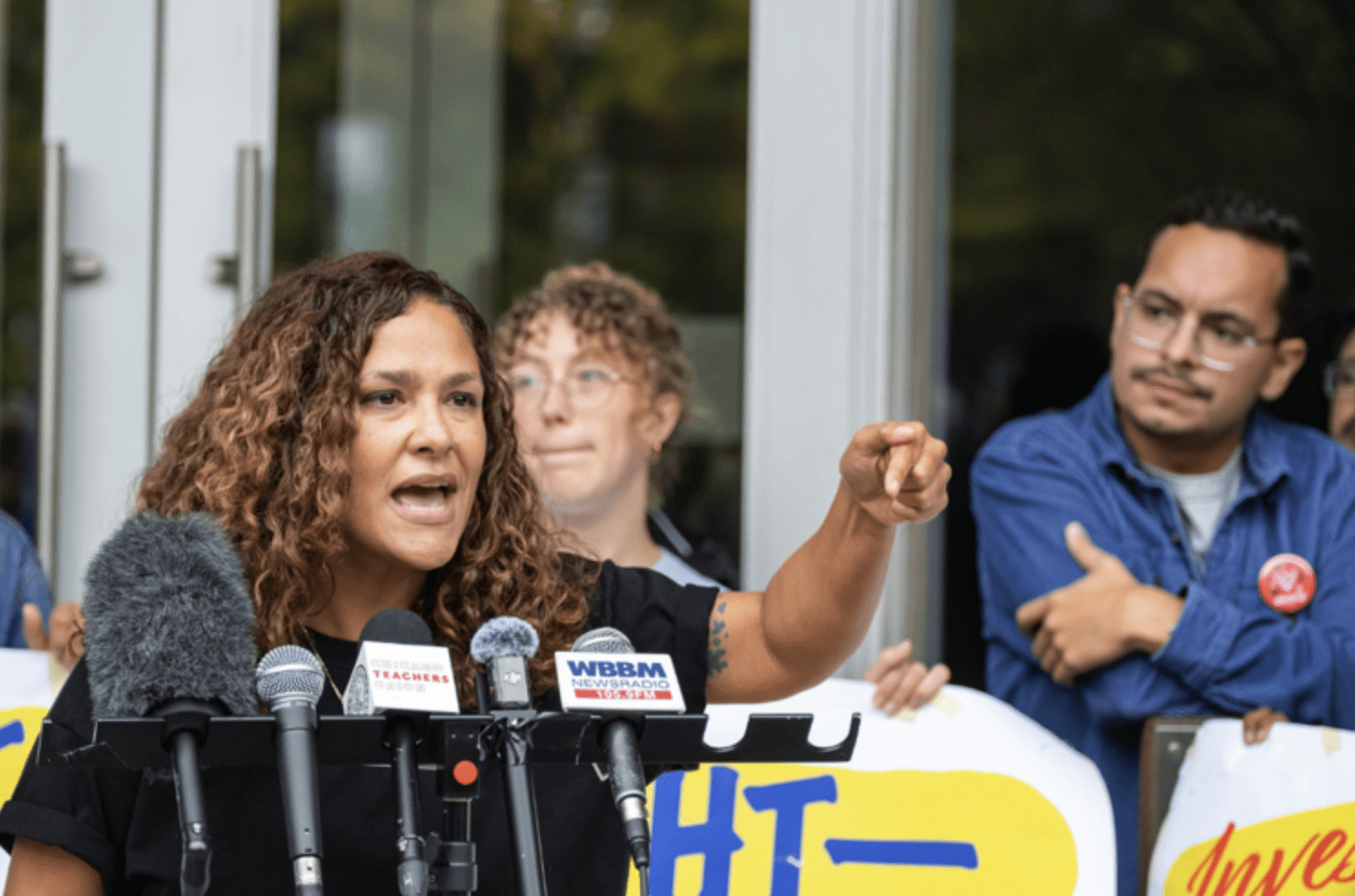
Lecciones claves para los legisladores del Condado de Los Ángeles
Mientras los funcionarios del Condado de Los Ángeles consideran cómo responder a la continua aplicación selectiva de la ley y a los ataques contra las comunidades de inmigrantes, Chicago ofrece una serie de lecciones propias que podrían servir de base para su próximo capítulo.
Tomando como ejemplo a Chicago, he aquí algunas conclusiones estratégicas para que el Condado de Los Ángeles colabore con los defensores de la comunidad en la implementación de políticas progresistas que brinden mayor protección a las comunidades inmigrantes de clase trabajadora.
Al igual que Illinois, California tiene desigualdades muy arraigadas y estructuras de gobierno que se extienden por ciudades y zonas no incorporadas. Chicago, sin embargo, ha demostrado que las grandes ciudades pueden unificarse bajo la solidaridad de la clase trabajadora y al combinar la formulación de políticas progresistas con la defensa comunitaria. Los líderes electos del área metropolitana de Chicago han asumido el reto que muchos políticos de todo el país no han asumido; en lugar de limitarse a hablar, están tomando medidas.
El concejal Sigcho-López, un ejemplo brillante de esta acción, afirma que no se trata sólo de palabras vacías, sino de "mantenerse firmes" para proteger la democracia en todo el país.
"Estamos aprendiendo a luchar contra estos mercenarios con todo lo que tenemos," dijo, "en los tribunales, en los órganos legislativos - pero también en las calles, movilizándonos, respondiendo, repartiendo comida, protegiéndonos unos a otros, protegiendo a nuestros vecinos."
Para los líderes electos del Condado de Los Ángeles, el reto consiste en adaptar esas lecciones a un contexto distinto: un entorno definido por una geografía extensa, jurisdicciones estratificadas y regímenes de aplicación de la ley que se entrelazan. Pero la lección principal sigue siendo la misma: cuando las medidas coercitivas son inevitables, lo que más importa es cómo se estructura la política, cómo se ejerce la supervisión y cómo se movilizan las socios comunitarios, en aras de la justicia, la confianza y la seguridad pública a largo plazo.
Si bien ciudades como Chicago, Los Ángeles y Portland han sido criticadas por Trump debido a que sus líderes electos se han manifestado abiertamente en contra de su corrupción y sus políticas, Sigcho-López señala que estas ciudades comparten un rasgo común: una larga historia de resiliencia y resistencia.
"Todo esto surge del movimiento sobre el terreno," afirma, "Nuestras políticas que son informadas por la gente sobre el terreno, los equipos de respuesta rápida, los maestros - todos nosotros conectados con el propósito común de protegernos mutuamente, proteger nuestros vecindarios y proteger nuestra ciudad."
